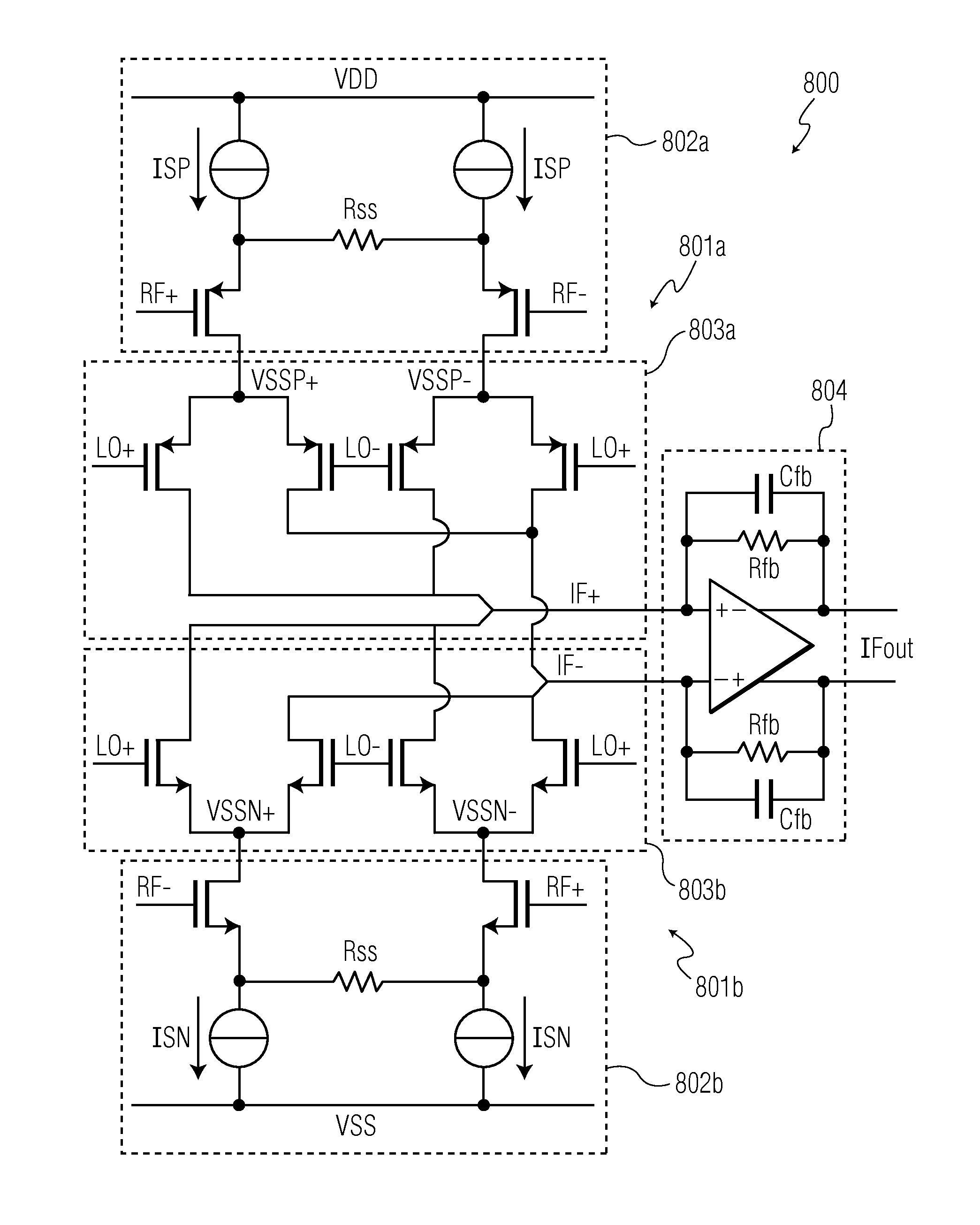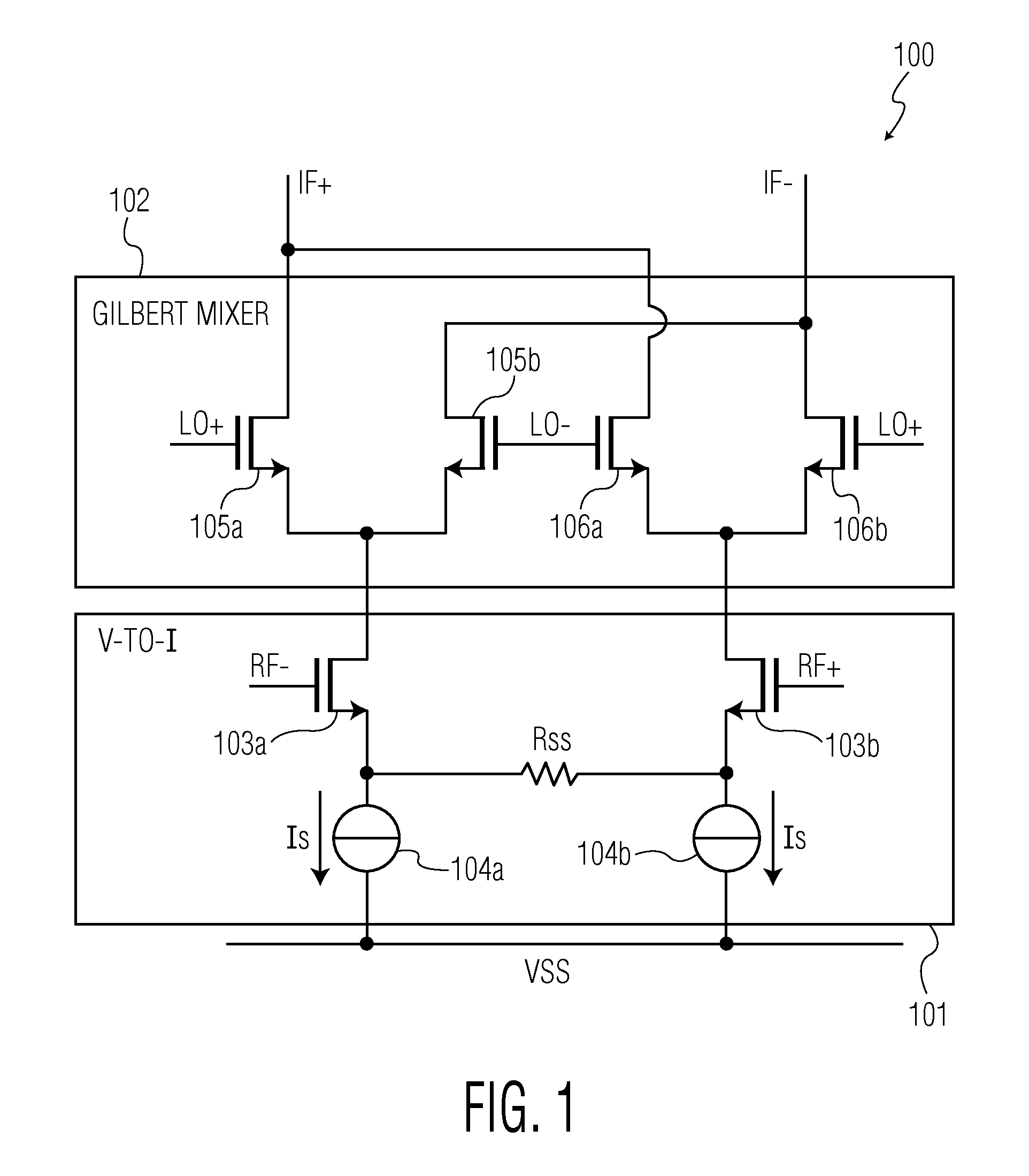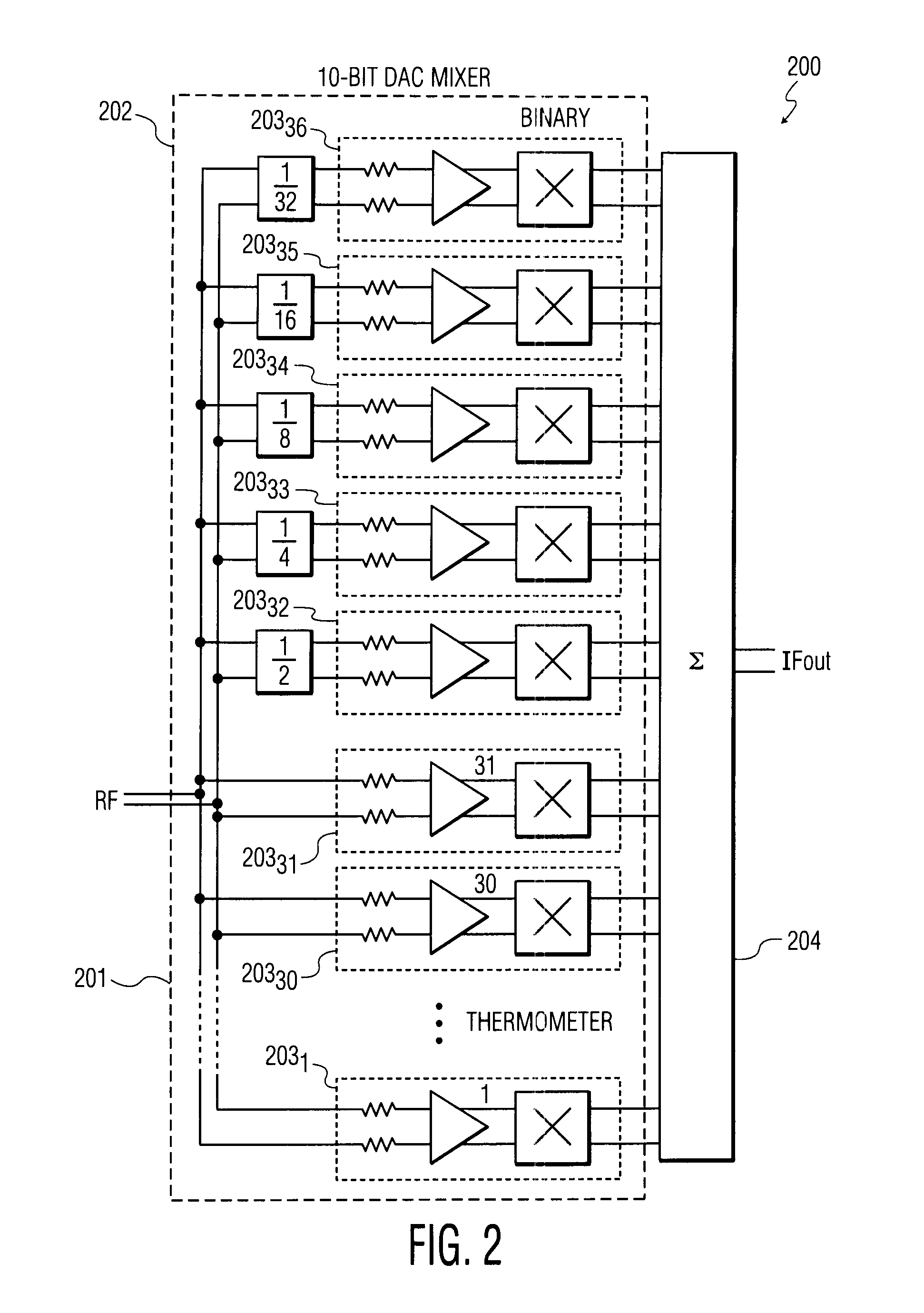Frequency conversion
a frequency conversion and frequency technology, applied in the field of frequency conversion, can solve the problems of affecting the output voltage of the mixer, the snr of the received signal, and the noise and intermodulation of the active gilbert mixer, so as to reduce the attractiveness of the use of parallel resonance lc tanks in order to convert the mixer output current into an output voltag
- Summary
- Abstract
- Description
- Claims
- Application Information
AI Technical Summary
Benefits of technology
Problems solved by technology
Method used
Image
Examples
Embodiment Construction
[0032]The intermediate frequency output circuit may be an intermediate frequency amplifier, or alternatively could comprise a resistor network.
[0033]The voltage to current converter and Gilbert mixer of each mixing module are preferably configured to share a common DC bias current. This reduces the noise contribution of the circuit.
[0034]The inputs of each voltage to current converter are preferably AC coupled to the first input signal, to enable an optimal DC biasing of the first and second voltage to current converter.
[0035]The transistors are typically CMOS transistors of PMOS and NMOS type, although implementations using bipolar junction transistors may be envisaged. By introducing complementary N type and P type active Gilbert mixers, the above mentioned problems relating to a DC bias current source can be avoided. The proposed mixer structure therefore has much better noise properties, and can, for example, advantageously be used as a building block in harmonic rejection mixer...
PUM
 Login to View More
Login to View More Abstract
Description
Claims
Application Information
 Login to View More
Login to View More - R&D
- Intellectual Property
- Life Sciences
- Materials
- Tech Scout
- Unparalleled Data Quality
- Higher Quality Content
- 60% Fewer Hallucinations
Browse by: Latest US Patents, China's latest patents, Technical Efficacy Thesaurus, Application Domain, Technology Topic, Popular Technical Reports.
© 2025 PatSnap. All rights reserved.Legal|Privacy policy|Modern Slavery Act Transparency Statement|Sitemap|About US| Contact US: help@patsnap.com



